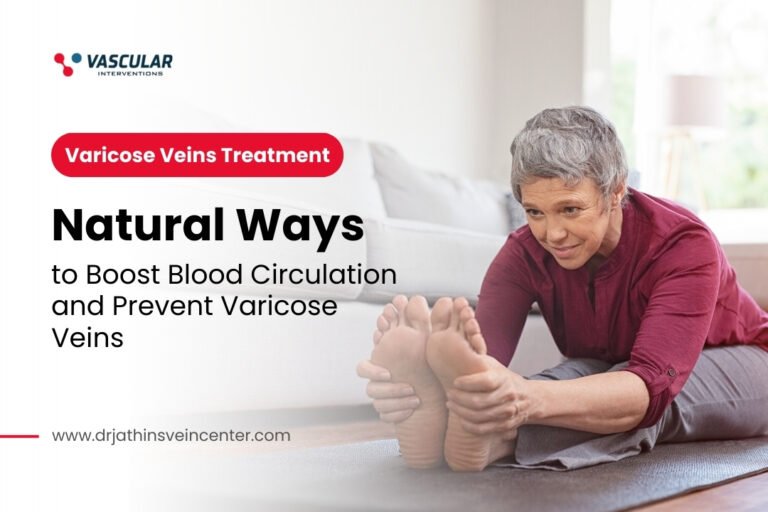A prevalent ailment that affect numerous individuals, particularly those with a family history or advancing age, is varicose veins. These veins become enlarged and twisted; leading to discomfort, pain, and swelling in the legs. If left untreated, the condition can escalate and cause more severe health complication. Fortunately, varicose veins can be treated with various options, including compression therapy.
Compression therapy involves wearing special stockings or socks that apply pressure to the legs, helping to improve blood flow and reduce swelling. This therapy has been used for many years to manage the symptoms of varicose veins and prevent their progression.
In this blog post, we will explore the role of compression therapy in varicose veins treatment and how it can effectively improve the health and well-being of those who suffer from this condition.
- Boosts venous blood circulation
Compression therapy plays a crucial role in the treatment of varicose veins. One of its key benefits is that it boosts venous blood circulation. Compression stockings or bandages exert pressure on the affected veins, encouraging blood flow to the heart. This pressure helps to reduce the diameter of the veins and prevent the backward flow of blood, leading to better venous blood circulation. Improved circulation promotes healing and helps relieve symptoms such as pain, swelling, and discomfort.
Additionally, compression therapy can help prevent the formation of blood clots, which is a significant risk factor for those suffering from varicose veins. Therefore, compression therapy is an effective and non-invasive treatment option that can improve the quality of life for patients with varicose veins.
2. Reduces swelling and inflammation
Compression therapy is an effective and non-invasive treatment for varicose veins that has been used for decades. One of the key benefits of compression therapy is its ability to reduce swelling and inflammation, which are common symptoms of varicose veins.
By applying pressure to the affected area, compression therapy helps improve blood flow and reduce blood pooling in the veins, leading to swelling and inflammation. This pressure also helps to prevent the formation of blood clots, which can be a serious complication of varicose veins. Overall, compression therapy is an important component of varicose vein treatment and can relieve symptoms while helping prevent further complications.
3. Enhances lymphatic system function
Compression therapy has been widely used in treating varicose veins because it improves venous blood flow and reduces venous hypertension. However, in addition to these benefits, compression therapy has also been found to enhance lymphatic system function.
The lymphatic system is critical in maintaining fluid balance in the body and is responsible for removing waste products and toxins. By applying external pressure to the affected area, compression therapy can help to stimulate lymphatic drainage and improve lymphatic circulation. This can help to reduce swelling and inflammation, improve immune function, and promote overall health and well-being. Therefore, compression therapy in treating varicose veins can provide multiple benefits beyond improving venous circulation, making it a valuable tool in managing this condition.
4. Limits progression of varicose veins
One of the important benefits of compression therapy in treating varicose veins is that it helps limit the progression of the condition. Varicose veins are caused by the pooling of blood in the veins due to weakened walls and valves. These veins can become enlarged and more visible when left untreated, causing discomfort and pain.
Compression therapy works by applying graduated pressure to the affected veins, which helps to improve circulation and prevent the blood from pooling. This, in turn, can help to slow down or even halt the progression of the condition, reducing the risk of complications and improving the overall quality of life for patients.
Compression therapy can also help alleviate symptoms such as swelling, achiness, and heaviness in the legs, making it a valuable treatment option for those suffering from varicose veins.
5. Complements other treatment options
One of the significant advantages of compression therapy in varicose vein treatment is that it can complement other treatment options. Compression therapy is often used alongside other treatments like sclerotherapy, endovenous laser therapy, or surgery. This is because compression therapy can help to reduce swelling, improve blood flow, and maintain vein function, which can aid in the success of other treatments.
Occasionally, compression therapy may be used as a pre-treatment option to prepare the veins for more invasive procedures. Compression therapy can provide a comprehensive approach to treating varicose veins and promoting overall vein health when used in conjunction with other treatments.
Conclusion
Compression therapy is an important and effective treatment option for those suffering from varicose veins. It is a non-invasive, low-risk, and cost-effective method that helps to reduce symptoms and prevent complications. When used properly, compression stockings or wraps have been proven to be an effective way to manage and alleviate the discomfort that often accompanies varicose veins.
However, it is important to seek the guidance of a medical professional before beginning any treatment plan, as they can provide personalized recommendations based on individual needs and medical history. With the right care and attention, compression therapy can be an excellent option for those seeking relief from the symptoms of varicose veins.





